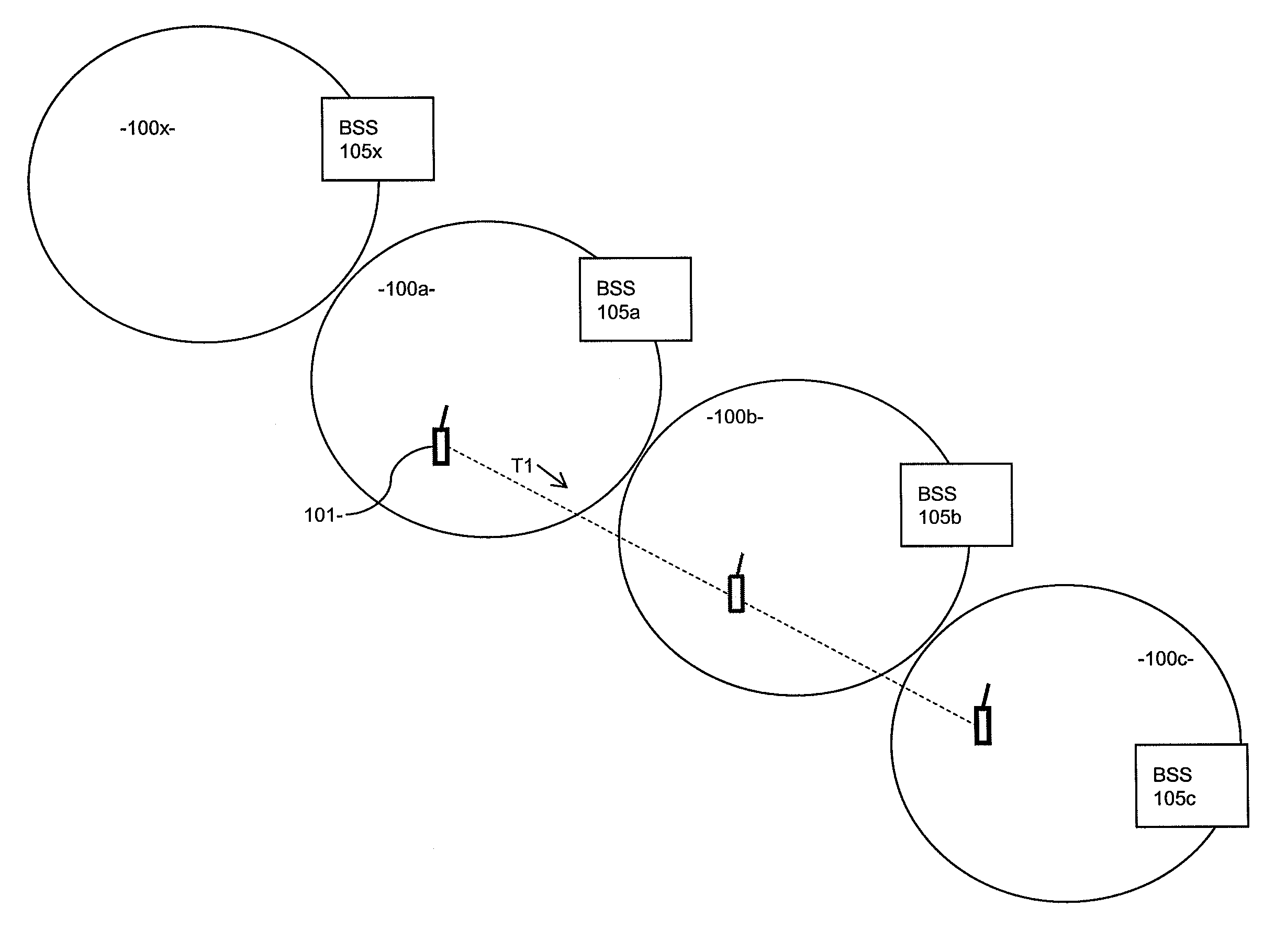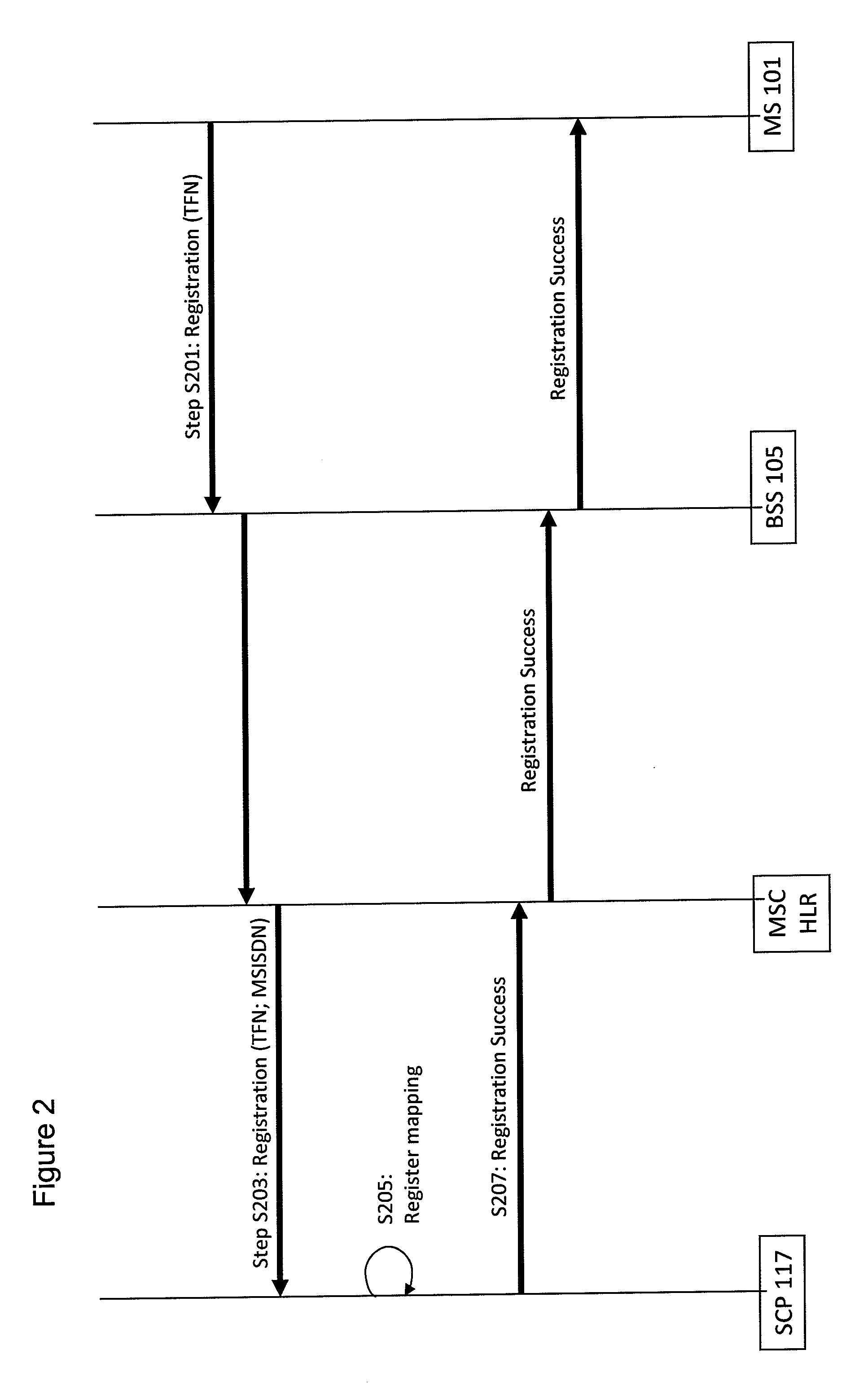Group Call Management
- Summary
- Abstract
- Description
- Claims
- Application Information
AI Technical Summary
Benefits of technology
Problems solved by technology
Method used
Image
Examples
Embodiment Construction
[0032]As described above, embodiments of the invention are concerned with coordinating movement of group calls through a cellular network, in particular with intelligently controlling parties joining a group call and selectively coordinating signalling between cells so as to avoid interruptions to reception of the group call as it moves. In order to appreciate the level at which embodiments of the invention operate, an overview of a Public Land Mobile Network (PLMN) 1, within which such embodiments can operate, will first be described with reference to FIG. 1.
[0033]The PLMN network shown in FIG. 1 comprises a cellular network such as a GSM or UMTS network (only one cell 100 being shown in FIG. 1). The cell 100 has a limited coverage and is served by the PLMN 1 via a Base Transceiver Station (BTS) 102 and a Base Station Controller (BSC) 103, which form a Base Station System (BSS) 105. The BSC 103 is connected to a Mobile Switching Center (MSC) 107 which is an exchange and is arranged...
PUM
 Login to View More
Login to View More Abstract
Description
Claims
Application Information
 Login to View More
Login to View More - R&D
- Intellectual Property
- Life Sciences
- Materials
- Tech Scout
- Unparalleled Data Quality
- Higher Quality Content
- 60% Fewer Hallucinations
Browse by: Latest US Patents, China's latest patents, Technical Efficacy Thesaurus, Application Domain, Technology Topic, Popular Technical Reports.
© 2025 PatSnap. All rights reserved.Legal|Privacy policy|Modern Slavery Act Transparency Statement|Sitemap|About US| Contact US: help@patsnap.com



